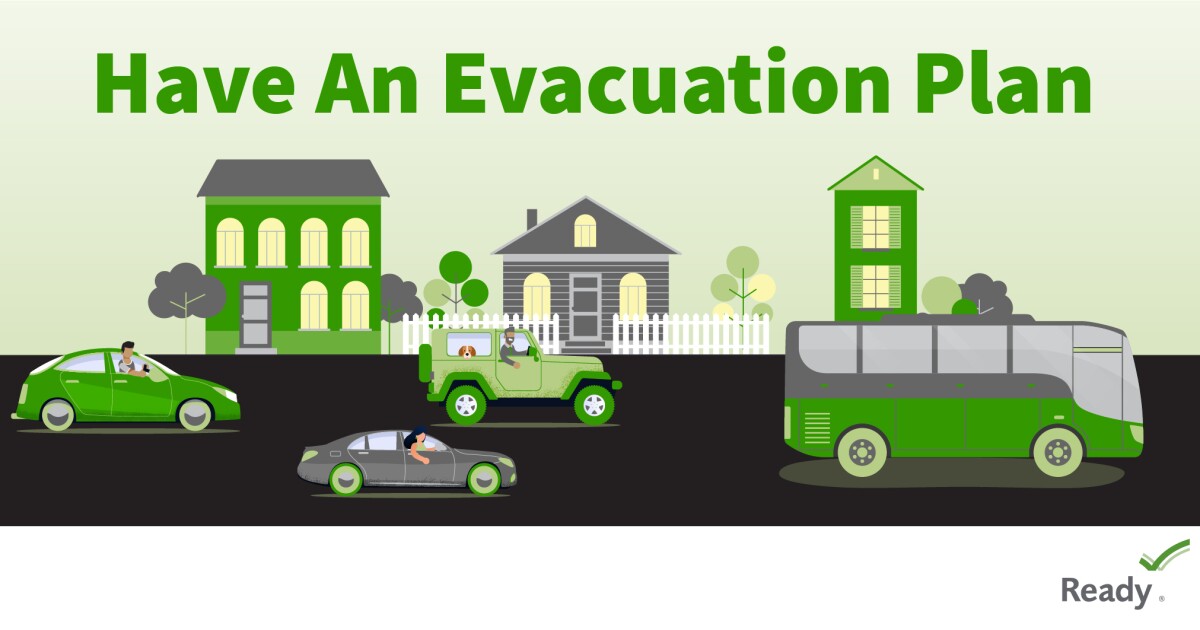
Emergency managers are simplifying the messaging around evacuation orders as some existing terms used fall out of use. Knowing when you are in danger, and when to evacuate, is critical ahead of the most active period of hurricane season.
Living in Florida, especially if you are a long-term resident, you might have heard the term “voluntary” or “mandatory” attached to an evacuation order. According to the Department of Homeland Security, a voluntary evacuation is a “warning to individuals within a designated area that a threat to life and property exists.” Residents may choose to vacate for their own safety in this scenario. A mandatory evacuation means residents must follow instructions and evacuate in accordance with local and state officials. However, some emergency managers are finding this distinction to be confusing to the public, and many are stepping away from the wording so they may issue more targeted, clear-cut evacuation orders.
“It’s kind of an outdated term,” Assistant Director of Emergency Management for Alachua County David Peaton said. “We changed it to just ‘evacuation order’ and we explain the reasoning for it, because your life may be in danger and emergency services may not be available to you.” Peaton explained that “a more helpful model is to ensure when the orders go out, to follow-up with why that order is going out.”,John MacDonald is the director of emergency management for Levy County. Unlike the inland Alachua County, which only evacuates low-lying areas, Levy County is coastal and can experience severe storm surge and flooding. MacDonald said he also prefers to stay away from that distinction. “Here typically we don’t do that. I just call them evacuations, that cuts out a lot of confusion, because either way you look at it, we’re going to open up a shelter anyways.” If someone chooses to stay in their home, MacDonald said “they should know they are not going to have any help arrive to them until the storm passes.” In Levy County, as in many other counties, emergency services are pulled off the road after a certain speed of sustained winds is reached.
Instead, both encouraged Floridians to “know your home and know your zone.” In an email from the Florida Division of Emergency Management, a spokesperson said this statewide program “encourages residents to understand if they live in an evacuation zone, a low-lying, flood-prone area, a mobile home, or an unsafe structure during hurricane season. These areas and buildings are most likely to be evacuated.” Leading up to a storm, it’s important to know what zone your home is in, and follow directions pertaining to that zone. Generally, Zone A is most vulnerable and most likely to be evacuated first, and Zone F is most likely to be evacuated last. The Division emphasized that it “encourages all Floridians to heed all warnings and evacuation orders from local officials during a storm.” Those considering sheltering at home should “know their home and its ability to withstand strong winds and heavy rain.”,In Florida, because evacuations are typically handled by local emergency managers, the wording and thresholds for an evacuation may vary. “Hazards are location-based,” Emergency Manager of the University of Miami Health System Elyzabeth Estrada said. “One size does not fit all,” Estrada said, “and we have to tailor our messaging to our population.”,Estrada emphasizes evacuation orders should not be ignored no matter the category of the storm. “People die from water, that’s the most common cause of death after a tropical cyclone,” Estrada said. When making an evacuation decision about you and your family, Estrada said not to worry about what your neighbors or friends are doing. Instead, have a personal timeline and determine your personal risk and your home’s risk for damage. You may choose to move inland, or you may choose to use a shelter. Whatever it is, have a plan.
“Don’t wait until the last minute."
9(MDA5NDY0MjA5MDEzMzcwMjQ4MTUxZWMwMg004))
